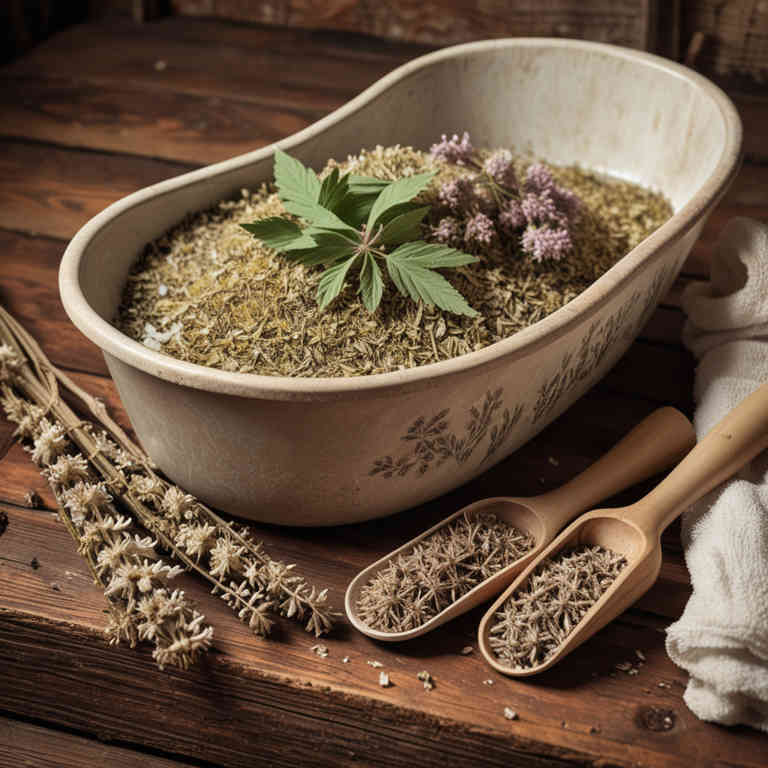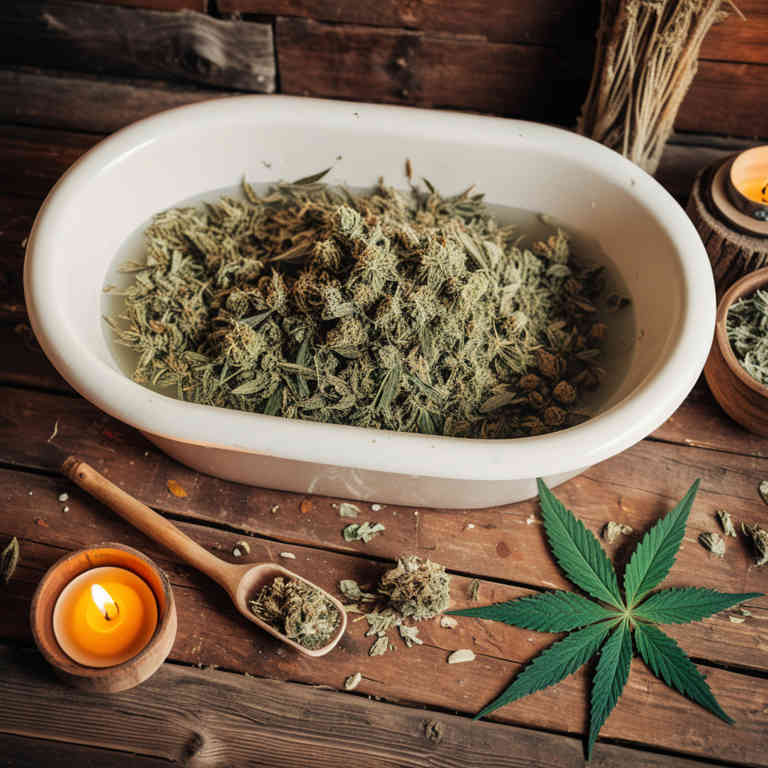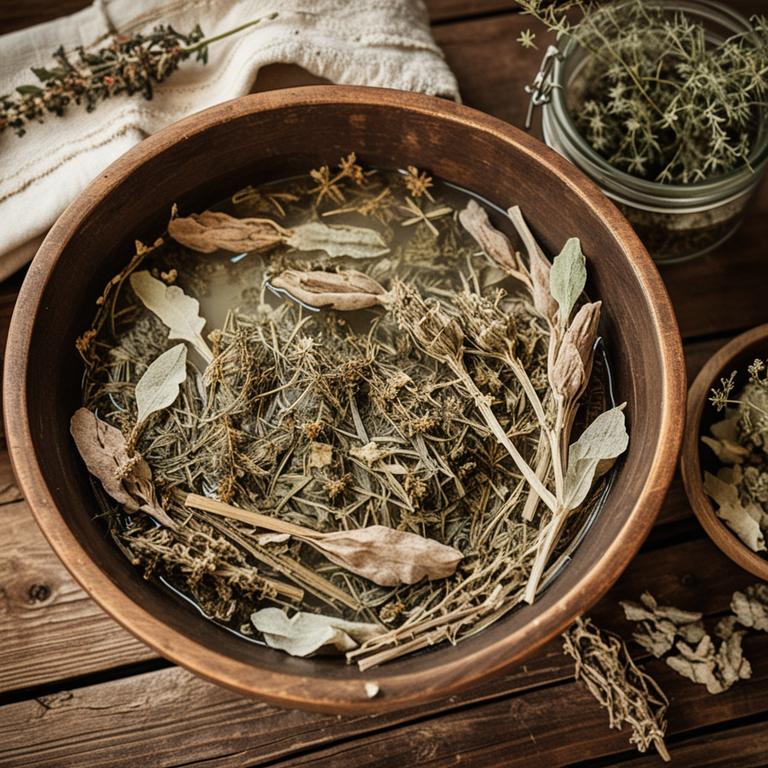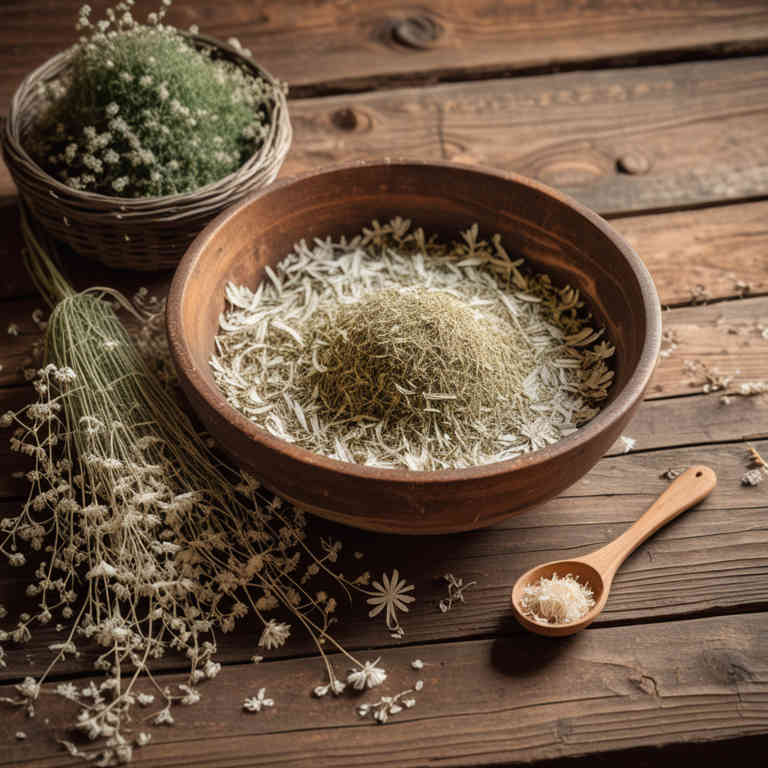10 Best Herbal Baths For Restless Leg Syndrome

Herbal baths can be a soothing and natural remedy for individuals suffering from restless leg syndrome (RLS), offering relief through the calming properties of certain botanical ingredients.
Herbs such as lavender, valerian root, and chamomile are commonly used in herbal baths due to their muscle-relaxing and anxiety-reducing effects. Soaking in warm water infused with these herbs can help ease the uncomfortable sensations and urges associated with RLS by promoting relaxation and improving circulation. The therapeutic aromas of these herbs may also have a calming effect on the nervous system, potentially reducing the frequency and intensity of RLS symptoms.
While herbal baths are not a cure, they can be a complementary approach to managing RLS alongside other lifestyle and medical interventions.
FREE Herb Drying Checklist
How to make sure every batch retains maximum flavor, color, and aroma without the risk of mold or over-drying. Eliminate guesswork and trial-and-error, making herb drying faster, easier, and more efficient every time.
Table of Contents
1. Valeriana officinalis

Valeriana officinalis, commonly known as valerian, has been traditionally used to promote relaxation and improve sleep, making it a potential remedy for restless leg syndrome (RLS).
Herbal baths infused with valerian root can help soothe the nervous system and alleviate the uncomfortable sensations associated with RLS. The calming properties of valerian are believed to be due to its high concentration of volatile oils and iridoids, which may have sedative and muscle-relaxing effects. To prepare a valerian bath, steep dried valerian root in hot water for several hours and then add the liquid to a warm bath.
While herbal baths may offer relief for some individuals, it is important to consult a healthcare provider before using valerian, especially if you are taking other medications or have underlying health conditions.
2. Hypericum perforatum

Hypericum perforatum, commonly known as St. John's Wort, has been traditionally used in herbal baths to alleviate symptoms of restless leg syndrome (RLS).
When infused into bath water, the essential oils and active compounds of Hypericum perforatum may have a calming effect on the nervous system, potentially reducing the uncomfortable sensations and urge to move the legs associated with RLS. These baths are believed to promote relaxation and improve sleep quality, which are often compromised in individuals with RLS. While some anecdotal evidence supports its use, more scientific research is needed to confirm its efficacy for this specific condition.
Nonetheless, many find herbal baths with Hypericum perforatum to be a soothing and natural complementary therapy for managing RLS symptoms.
3. Lavandula angustifolia

Lavandula angustifolia, commonly known as English lavender, has been traditionally used for its calming and soothing properties, making it a popular choice for herbal baths aimed at alleviating symptoms of restless leg syndrome (RLS).
When infused into bath water, lavender essential oil or dried lavender flowers can help relax muscles and reduce the tingling and cramping sensations associated with RLS. The aromatic compounds in lavender promote relaxation and improve sleep quality, which is often disrupted in individuals suffering from RLS. Regular use of lavender-infused baths may help ease the discomfort and frequency of leg movements during rest.
While not a cure, lavender baths can serve as a complementary therapy to support overall wellness and symptom management for those with restless leg syndrome.
4. Equisetum arvense

Equisetum arvense, commonly known as horsetail, has been traditionally used in herbal baths for its potential to alleviate symptoms of restless leg syndrome (RLS).
The plant is rich in silica and other minerals, which may help improve circulation and reduce nerve irritation, both of which are linked to RLS. Soaking in a horsetail herbal bath can promote relaxation and ease the uncomfortable sensations associated with the condition. This natural remedy is often preferred by individuals seeking non-pharmacological treatments for their symptoms.
While more research is needed, many users report a soothing effect from incorporating horsetail into their bath routine.
5. Rosmarinus officinalis

Rosmarinus officinalis, commonly known as rosemary, has been traditionally used in herbal baths to alleviate symptoms of restless leg syndrome (RLS).
The essential oils derived from rosemary leaves contain compounds like camphor and pinene, which are believed to have soothing and circulatory benefits. When used in a warm bath, rosemary can help relax the muscles and reduce the uncomfortable sensations associated with RLS. Some studies suggest that the aromatic compounds in rosemary may also have a calming effect on the nervous system, potentially reducing the frequency of leg movements during sleep.
However, while anecdotal evidence supports its use, more scientific research is needed to fully understand its efficacy for managing RLS.
6. Cannabis sativa

Cannabis sativa herbal baths have gained attention as a potential natural remedy for restless leg syndrome (RLS), a condition characterized by an irresistible urge to move the legs, often accompanied by uncomfortable sensations.
These baths typically involve infusing cannabis-infused oils or topical products into warm water, allowing the body to absorb cannabinoids through the skin. The therapeutic properties of cannabidiol (CBD) and tetrahydrocannabinol (THC) may help reduce inflammation and promote relaxation, potentially alleviating the symptoms of RLS. Some users report improved sleep quality and reduced restlessness after incorporating cannabis baths into their routine.
While more research is needed, these baths offer a non-invasive, alternative approach for managing RLS symptoms.
7. Achillea millefolium

Achillea millefolium, commonly known as yarrow, has been traditionally used in herbal remedies for its potential calming and soothing properties.
When incorporated into herbal baths, yarrow may help alleviate symptoms of restless leg syndrome (RLS) by promoting relaxation and improving circulation. The anti-inflammatory and mild sedative effects of yarrow may reduce the uncomfortable sensations and urges associated with RLS. To prepare an herbal bath, steep dried yarrow flowers in hot water and add the infusion to warm bathwater.
While more research is needed, some individuals report finding relief from RLS symptoms through regular use of yarrow-infused baths as part of a holistic self-care routine.
8. Urtica dioica

Urtica dioica, commonly known as stinging nettle, has been traditionally used in herbal baths to alleviate symptoms of restless leg syndrome (RLS).
The anti-inflammatory and calming properties of stinging nettle may help reduce the uncomfortable sensations and urge to move the legs associated with RLS. To prepare a nettle bath, fresh or dried leaves are steeped in hot water and then added to warm bath water, allowing the skin to absorb the beneficial compounds. Some individuals report improved sleep quality and reduced RLS symptoms after regular use of nettle baths.
While more research is needed, nettle baths offer a natural, soothing alternative for those seeking relief from restless leg syndrome.
9. Cnicus benedictus

Cnicus benedictus, also known as blessed thorn, has been traditionally used in herbal baths to alleviate symptoms of restless leg syndrome (RLS).
The plant contains compounds such as flavonoids and essential oils that may help soothe nerve pain and reduce muscle tension. When infused into warm water, the bath can promote relaxation and improve circulation, potentially easing the uncomfortable sensations associated with RLS. Some individuals report that regular use of blessed thorn baths leads to reduced frequency and intensity of leg movements during sleep.
While more scientific research is needed, anecdotal evidence suggests that this natural remedy may offer a complementary approach to managing RLS symptoms.
10. Pimpinella anisum

Pimpinella anisum, commonly known as anise, has been traditionally used in herbal remedies for its calming and soothing properties.
When incorporated into herbal baths, anise can help alleviate symptoms of restless leg syndrome (RLS) by promoting relaxation and improving circulation. The essential oils and compounds in anise, such as anethole, may have a mild sedative effect that can ease the uncomfortable sensations associated with RLS. To use anise in a bath, one can add a few drops of anise essential oil or a handful of dried anise seeds to warm water, allowing the aromatic compounds to diffuse into the water.
While anise baths may offer some relief, it is important to consult with a healthcare provider before using them as a treatment for RLS, especially if other underlying conditions are present.